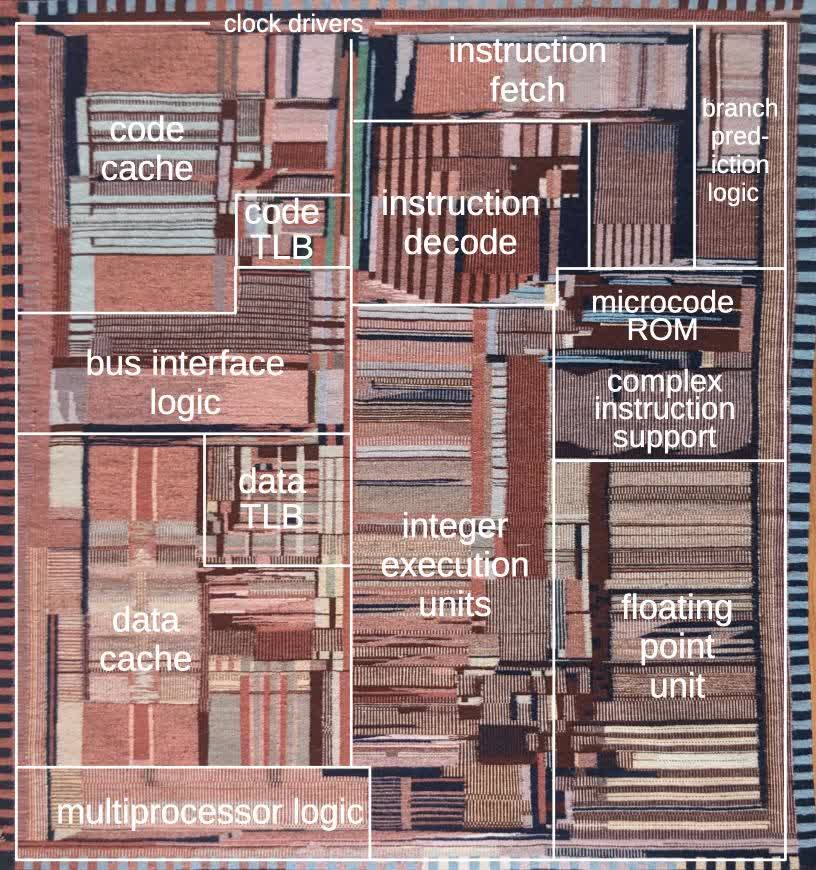Serving tech enthusiasts for over 25 years.
TechSpot means tech analysis and advice you can trust.
Woven history: During a recent visit to the National Gallery of Art, computer historian Ken Shirriff stumbled across a Navajo weaving with a strangely familiar pattern. Upon closer inspection, he realized it was a replica of one of Intel's first Pentium processors reproduced in stunning detail.
Intel commissioned the Navajo rug as a gift to the American Indian Science & Engineering Society way back in 1994. It was crafted by Marilou Schultz based off a photo of the chip die, which she split into 64 sections. Schultz utilized what's called a "raised outline" method to give the rug a three-dimensional effect on the borders, and sourced the wool for the project from long-horned Navajo-Churro sheep.
The process was lengthy, as Schultz was only able to add about one to 1.5 inches of work per day. Plant dyes were used for coloring, but the cream colored sections were left untreated and represent the natural color of the sheep wool.

As Shirriff notes, the weave is so detailed that you can identify the chip's floorplan so long as you know what you are looking for. Experts may even notice that the rug is based on a specific variant known as P54C, a revision that featured a more advanced manufacturing process and additional changes to reduce power consumption and improve performance.
The weaving has no true front or back because the design is similar on both sides, just mirrored. Interestingly enough, the gallery picked the "wrong" side of the chip to display facing forward. "This probably bothers nobody but me, but I hope the gallery will correct this in future exhibits," Shirriff said.
The rug was part of an exhibit called Woven Histories: Textiles and Modern Abstraction, which explored how art and woven textiles converged over the past hundred years. The exhibit featured around 160 works from more than 50 artists around the globe, and ran from March 17 through July 28, 2024. It's unclear when or if the rug will be available again for public viewing.
Found is a TechSpot feature where we share clever, funny or otherwise interesting stuff from around the web.
Image credit: Ken Shirriff